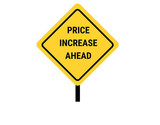Information about Leasing a Wide Format or Office Copier explained
Thinking about getting a New Wide Format Plotter or Office Copier?
The good news is you don't have to layout thousands and thousands of dollars to get a new machine. We have many programs that can help customers get the machine they want, at the price they can afford per month.
Some customers ask - What are my options? To answer, you can LEASE, RENT, or lease with a 1.00 BUYOUT option.Here are the differences explained. If you need more help, Please contact an Aresco Rep with any other questions.
Leasing (FMV Leases)A lease is a contract for a machine set period of time and for set payment terms. An FMV lease stands for "Fair Market Value". FMV leases are the most popular since they are often the cheapest option for a Wide Format Printer, and come with upgrade options within the life of the lease. The FMV lease gives the customer the option at the end to "Return it and get a new machine" or "Buyout the machine, and Keep it."
Sometimes
FMV Leases come with many conditions in terms of the allowed use of the
asset and some require maintenance terms since the customer does not
own this machine.
A typical lease is often a longer term, ranging from 12 months to 63 months.
It
is also not uncommon for the machine to revert to the lessee at the end
of the lease automatically or for what is termed a 'FMV purchase
option' where the machine can be bought. This means that once the lease
runs its course you have effectively bought the asset, though when
considering the lease payments often for far more than it was actually
worth.
From
an accounting and tax perspective leases typically fall into two main
categories, operating leases and capital leases. If the lease terms meet
certain criteria the lease will be considered capital, including; 1)
the value of the lease payments makes up most of the fair market value
of the asset, 2) the life of the lease makes up most of the effective
useful life of the asset, and 3) there is a bargain purchase option.
Capital
leases require you to record the leased asset as a fixed asset on your
financial statements and also record the lease obligation as a
liability.
An
operating lease has no such requirement and you can simply expense the
lease payments each time they are made, for accounting and tax purposes.
Renting
typically involves a shorter time period, often 1 year maximum, with
the option to extend after the term at the discretion of both parties.
Rentals are more suited to the temporary use of them machines when the
expectation is that it will not be needed long term. Rental contracts
are generally far more casual than lease agreements, where a formal
agreement with many terms will be drawn up.
Alternatively,
if the cost of renting/leasing the asset is high it can be rented for a
short period only when absolutely needed and then returned. Often this
happens with construction work, where a very expensive piece of
equipment is needed for a relatively short time period but not
afterwards. There's no need to buy the asset or even lease it for
several years, so a short rental period is appropriate.
Rental costs are always expensed on the income statement for both accounting and tax purposes.
A $1 Buyout Lease, also called a capital lease, is similar to purchasing equipment with a loan. With this type of lease, there is a higher monthly payment compared with an FMV lease, but at the end of the lease term, the lessee purchases the equipment for $1. Since it is very similar to taking out a loan on a piece of equipment, this type of lease is often used when a business plans to keep the equipment for a long period of time, or when equipment obsolescence isn’t a concern.
$1 Buyout Leases are often used for equipment that retains its value over time, such as construction equipment, automotive repair, material handling, tooling, cleaning equipment and pressure washers. $1 Buyout Leases have a set lease term - Fixed monthly payments. Equipment ownership is often transferred to the lessee, and the equipment appears on the balance sheet as company assets.
For tax purposes, there are benefits to leasing the equipment with a $1 Buyout, rather than purchasing it. Prakash explains how this works: “If you lease a $10,000 pizza oven on a $1 buyout basis, the oven will appear as an asset on your business’ balance sheet, and the lease will appear as a corresponding liability. For tax purposes, using Section 179, it is possible to deduct the entire $10,000 as a business expense in the first year of purchase.”
At the end of the lease term, the lessee purchases the equipment for $1.
Please be sure to contact an Aresco Rep if you would like a quote for a monthly payment for a machine.
Recent Posts
-
Information about Leasing a Wide Format or Office Copier explained
Thinking about getting a New Wide Format Plotter or Office Copier? The good news is you don't have …Nov 12th 2024 -
Aresco attends the 2023 INK BOLDY EVENT to see new products!
News ReleaseFOR IMMEDIATE RELEASEEpson Welcomes Dealers to its 2023 InkBoldly Partner ConferenceEpso …Feb 14th 2023 -
2022 Welcomes the first Paper Price increase of the year
It pains us to announce there will be another paper increase from the mills in Q1 of 2022. There is …Feb 9th 2022

